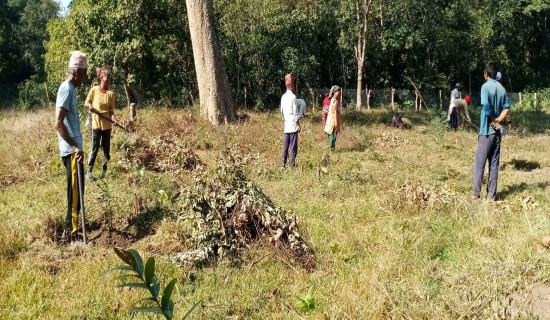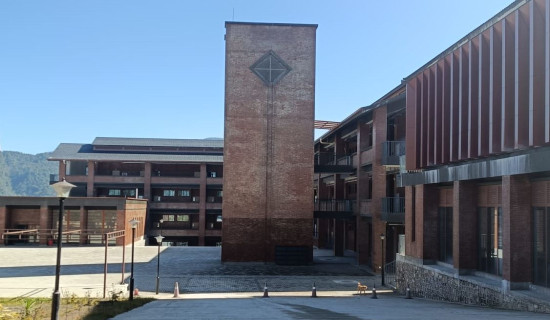- Sunday, 14 December 2025
Demand made to convert Koshi Tappu into national park
By Jaya Krishna Yadav,Inaruwa, Feb. 9: Local people's representatives in Sunsari have demanded that the Koshi Tappu Wildlife Reserve be converted into a national park. Spread over Province 1 and Madhes Province, the reserve is one of the main habitats of birds and arna (wild water buffalo).
The representatives, including Aiyuv Ansari, Chairman of Koshi Rural Municipality, have demanded that the reserve, which is known as a tourist spot in the East, be made a national park to attract more tourists.
Speaking at a programme to make the bird census public, Ansari said that there was a threat to wild animals and that could be mitigated by converting it into a national park. He also claimed that four years ago, a three-member team headed by Deputy Secretary Narayan Rupakheti of the Department of National Parks and Wildlife Conservation conducted an initial feasibility study about it.
Ansari said that turning the reserve into a park can deter the wild animals from coming out to the settlements. There should be a sewer to manage the waste, and create a beautiful environment for tourists to travel inside as well as go on safari and study, he added.
Suleman Mansuri, Chairman of Ward No. 3 of the rural municipality, said that the reserve had done more harm than good to the people. “Animals from the reserve are causing loss to human lives and properties. Converting it into national park can be the solution to that problem.”
Rich in biodiversity, Koshi Tappu is an excellent destination for the study, research and observation of a variety of fauna and flora, birds, and wild animals.
Ramesh Kumar Yadav, conservation officer of the reserve, informed that making it a park can attract domestic and foreign tourists, making it a source of revenue. Currently, the reserve is spread over an area of 175 square kilometres and another 173 square kilometres forms a buffer zone.
Altogether 587 species of riverside plants, 500 wild water buffalos, wild elephants, dolphins, pangolins, 40 species of mammals, 527 species of birds, 141 species of fish and 77 species of butterflies call the reserve their home. There were only 63 wild water buffalos in 1976 when the reservation was announced.
Without aggressive carnivores like tigers and leopards, the reserve is seeing the growing number of herbivorous animals such as deer. Thousands of migratory birds including the sarus crane come to the reserve, as far as from the North Pole, Siberia.
According to the classification of protected areas, it is time to look for an alternative to the reserve to make it the only reserve in Nepal where native wild water buffalo is found as a major animal in Eastern Nepal.
The government took 15 wild water buffalos to replace them with one-horned rhinos five years ago with a commitment to converting the reserve into a national park. But the reserve, which is listed in the fourth category of the World Conservation Union, is yet to receive the rhinos, according to the reserve.
The government declared the area within the triangular border of Sunsari, Udaipur and Saptari of Madhesh province, touched by the banks of the Saptakoshi River, a buffer zone on September 16, 1974.
According to conservationists, if the area is expanded and a national park is built, the river will be connected to Chure in the north, protecting the biological route of wild animals coming from North East India.
















